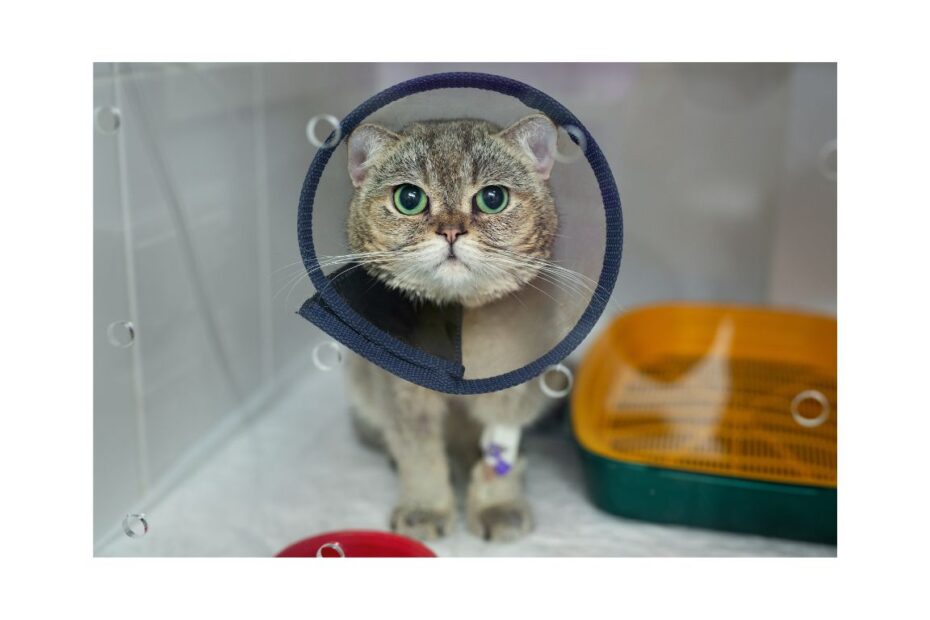The cost to desex a cat will vary depending on a few different factors including the gender of your cat, their age, and the clinic where they get desexed at. Desexing can definitely help to limit the number of unwanted litters of kittens but it can also have some positive health and behavioural outcomes for cats.
Table of Contents
What is desexing?
Desexing means your cat will be sterilised rendering them infertile and unable to breed. In females a surgical procedure known as an Ovariohysterectomy (spey) is performed which involves removal of the uterus and ovaries. For males a surgery known as an orchidectomy (castration) is performed in which the testes are removed.
Male cats
Desexing male cats is a relatively quick and non-invasive procedure. An incision is made over the scrotum and the testicles are removed and spermatic cords tied off. Usually no stitches are placed as they are not required.
Female cats
Desexing females is more invasive than males as the surgery requires going into the abdomen. Stitches can be external (on the outside) or intradermal (on the inside of the skin so not able to be seen externally).
Why should I desex my cat?

Desexing will prevent unwanted litters of kittens and help reduce pet overpopulation. Apart from this there are also health and behavioural benefits for both genders.
Male cats
Desexing can make cats less likely to want to roam which can in turn reduce risks such as being involved in car accidents and fighting with neighbourhood cats. This can further decrease the spread of some diseases, such as Feline Aids and cat flu viruses. Desexed male cats are less likely to show aggression than entire males. Additionally males are less likely to scent mark by spraying urine (which is a big bonus if they tend to do this inside your house and on your furniture!).
Female cats
Desexing eliminates your cat being able to become pregnant which eliminates any pregnancy ,birth and lactation related complications. They will also not come into heat therefore preventing heat behaviours such as vocalising, excessive grooming, attention seeking, and restlessness. Furthermore it eliminates uterine infections (pyometra) and reduces the risk of mammary cancer.
When should I get my cat desexed?
The ideal time for desexing a female cat should be before they reach sexual maturity which is usually between 4-6 months of age. Desexing in male cats is recommended at 6 months of age.
Shelters and welfare organisations will usually perform early age desexing from 8 weeks of age or 1kg in body weight.
We recommend you discuss the ideal time with your vet depending on you and your cat’s individual case.
What does desexing my cat entail?

Your cat will be taken to the vet and admitted by a vet or vet nurse and you can ask any questions you may have. Your cat will be fasted for the surgery and will stay for the day and discharged when they are ready to go home.
Your clinic may offer a pre-anaesthetic blood test prior to surgery to check your cat’s internal health. Your cat will be given a pre-medication (usually a combination of an opioid pain relief and sedative) to help reduce anxiety.
Do be aware that your cat will be clipped for surgery and they often have a patch where they are clipped on their leg where an IV catheter is inserted to provide medication and fluid therapy. Females will have stitches (or internal stitches) which will need to be removed or checked in a recheck appointment.
Female cats may require an Elizabethan Collar to wear around their neck after surgery to prevent them from licking their incision site or taking out their own stitches! It is also important for them to be rested and kept indoors until they have recovered and their stitches have been taken out.
So how much does desexing my cat cost?
Usually desexing a male cat costs less due to a shorter procedure time and less invasive surgery that is required to desex them. A female desexing costs more due to the invasive surgical procedure (entering through the abdomen) and length of time of the surgery. A castration can cost anywhere from $150 – $250 and a spey can vary from $200 – $500. Some additional costs for females may include if the female is in heat or pregnant as this requires more time and skill. For male cats additional costs may include if the cat is cryptorchid (either one or both testicles have not descended into the scrotum), as this may even require an abdominal surgery to locate and remove the undescended testicle/s.
Do follow the discharge instructions carefully and keep your cat quiet after surgery. Do not let females lick or scratch at their spey incision or stitches as this can lead to infection, or damage to the wound or stitches. Any post-operative issues may require additional fees such as additional pain relief, antibiotics or re-stitching open wounds.
Does pet insurance cover the cost of desexing?

Routine desexing is considered an elective procedure and therefore is not covered by most insurance policies, including Pet Circle Insurance. Pet Insurance is primarily designed to cover for unexpected injuries or illnesses and not routine or elective procedures. However, some insurance policies may allow you to add on routine care (for an additional cost) and therefore the cost or part of the cost of the desexing may be covered.
It is important to carefully read and understand the terms and conditions of your pet insurance policy to understand what is covered and what is not covered.

